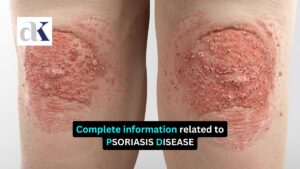
7 Natural Tips for Glowing Skin – Skin Specialist in Indore Dr. Atul Kathed
Everyone desires radiant, glowing skin that reflects good health and self-care. While countless beauty products flood the market, the true secret to lasting glow often lies in natural remedies and lifestyle choices. According to Dr. Atul Kathed, Skin Specialist in Indore, integrating simple yet powerful habits into your daily routine can transform your skin naturally. In this article, we share 7 Natural Tips for Glowing Skin that are backed by both traditional wisdom and modern dermatological insights. Avoid Touching Your Face to Protect Skin Health One of the most overlooked yet highly effective habits for healthy skin is simply keeping your hands off your face. Throughout the day, our hands collect dirt, oil, and bacteria from surfaces. When we unconsciously touch our face, we transfer these impurities directly onto our skin. This can lead to clogged pores, acne breakouts, and dullness. Dr. Kathed emphasizes practicing proper hand hygiene and being mindful of unnecessary face-touching. Washing hands before applying skincare products or makeup ensures reduced bacterial exposure. This small change can make a significant difference in achieving glowing, blemish-free skin. Neem Steam for Natural Cleansing and Purification Neem, known as the “village pharmacy” in Ayurveda, is rich in antibacterial, antifungal, and anti-inflammatory properties. Taking neem steam once a week is a simple and effective way to purify your skin. Boil neem leaves in water, then let the steam open your pores. This process not only deep cleanses impurities but also reduces acne-causing bacteria. Once the steam session is done, splash your face with cold water to close the pores. Regular use of this remedy helps in reducing pimples, enhancing skin texture, and promoting natural radiance. Including this step in your skincare regimen ensures that your skin stays fresh, clear, and naturally glowing. Coconut Oil for Gentle Makeup Removal Many chemical makeup removers can strip the skin’s natural oils, leaving it dry and irritated. Instead, opt for cold-pressed coconut oil to remove makeup gently and effectively. Coconut oil dissolves makeup, including stubborn waterproof products, without harming the skin barrier. It also nourishes the skin with essential fatty acids while its lauric acid content provides antibacterial benefits. This means that apart from cleansing, it helps in preventing breakouts and maintains your skin’s natural glow. For best results, apply coconut oil to your face, massage gently, and wipe off with a soft cotton pad. Follow it with a mild cleanser for a double-cleansing routine that keeps your skin hydrated, smooth, and luminous. Chilled Jade Roller for Puffiness and Circulation If you wake up with puffy skin or under-eye bags, a chilled jade roller can work wonders. Rolling this cooling tool across your skin stimulates lymphatic drainage, reduces swelling, and enhances blood circulation. The cold sensation constricts blood vessels, helping to tighten skin and reduce puffiness, while the rolling motion improves nutrient delivery to skin cells. Using it regularly not only gives you an instant refreshed look but also contributes to long-term skin firmness and radiance. For maximum effect, store the jade roller in the refrigerator and use it every morning for naturally glowing, youthful-looking skin. Butterfly Pea Flower Tea for Anti-Aging Benefits What you consume internally reflects externally on your skin. Butterfly pea flower tea is a natural herbal drink loaded with antioxidants and flavonoids. These compounds fight free radicals, slow down the effects of photoaging, and improve overall skin resilience. When combined with mint leaves or chia seeds, this tea enhances hydration and nutrient absorption. Regular intake helps in reducing fine lines, improving skin elasticity, and maintaining youthful glow. Drinking this tea daily not only supports healthy skin but also boosts overall wellness, making it a holistic approach to skincare. Face Yoga (Anam Yoga) for Muscle Tone and Firmness Facial sagging and loss of elasticity often contribute to a dull appearance. Practicing face yoga (anam yoga) strengthens facial muscles, improves circulation, and enhances skin tone. Simple exercises such as blowing exaggerated puffs of air, stretching facial muscles, or practicing controlled expressions help in toning and lifting the face naturally. These exercises stimulate blood flow, which delivers oxygen and nutrients to the skin, resulting in improved elasticity and reduced signs of premature aging. Incorporating 10–15 minutes of face yoga into your daily routine ensures your face stays firm, sculpted, and radiant without the need for invasive treatments. Turmeric-Ghee Balm for Overnight Skin Repair Nighttime is the best period for skin repair, and applying a turmeric-ghee balm can work wonders while you sleep. Turmeric is known for its healing and anti-inflammatory properties, while ghee provides deep hydration and nourishment. Mix a small amount of turmeric with pure cow ghee and apply it as a thin layer before bedtime. This balm helps fade blemishes, reduce acne scars, and deeply moisturize the skin. By morning, your skin feels soft, clear, and naturally glowing. To avoid staining your bed linens, use an old pillowcase while following this treatment. Over time, this natural remedy will enhance your skin tone and provide a youthful, radiant glow. Final Thoughts Healthy, radiant skin doesn’t always come from expensive treatments or chemical products. The secret lies in consistent natural care and mindful lifestyle practices. By following these 7 Natural Tips for Glowing Skin—avoiding face-touching, neem steam cleansing, coconut oil cleansing, chilled jade rolling, butterfly pea tea drinking, face yoga, and turmeric-ghee balm application—you can achieve clearer, healthier, and naturally radiant skin. Dr. Atul Kathed, a trusted Skin Specialist in Indore, emphasizes that combining these natural remedies with professional guidance ensures long-lasting results. Small, daily changes can have a profound impact on your skin’s health, giving you the glow you deserve.















